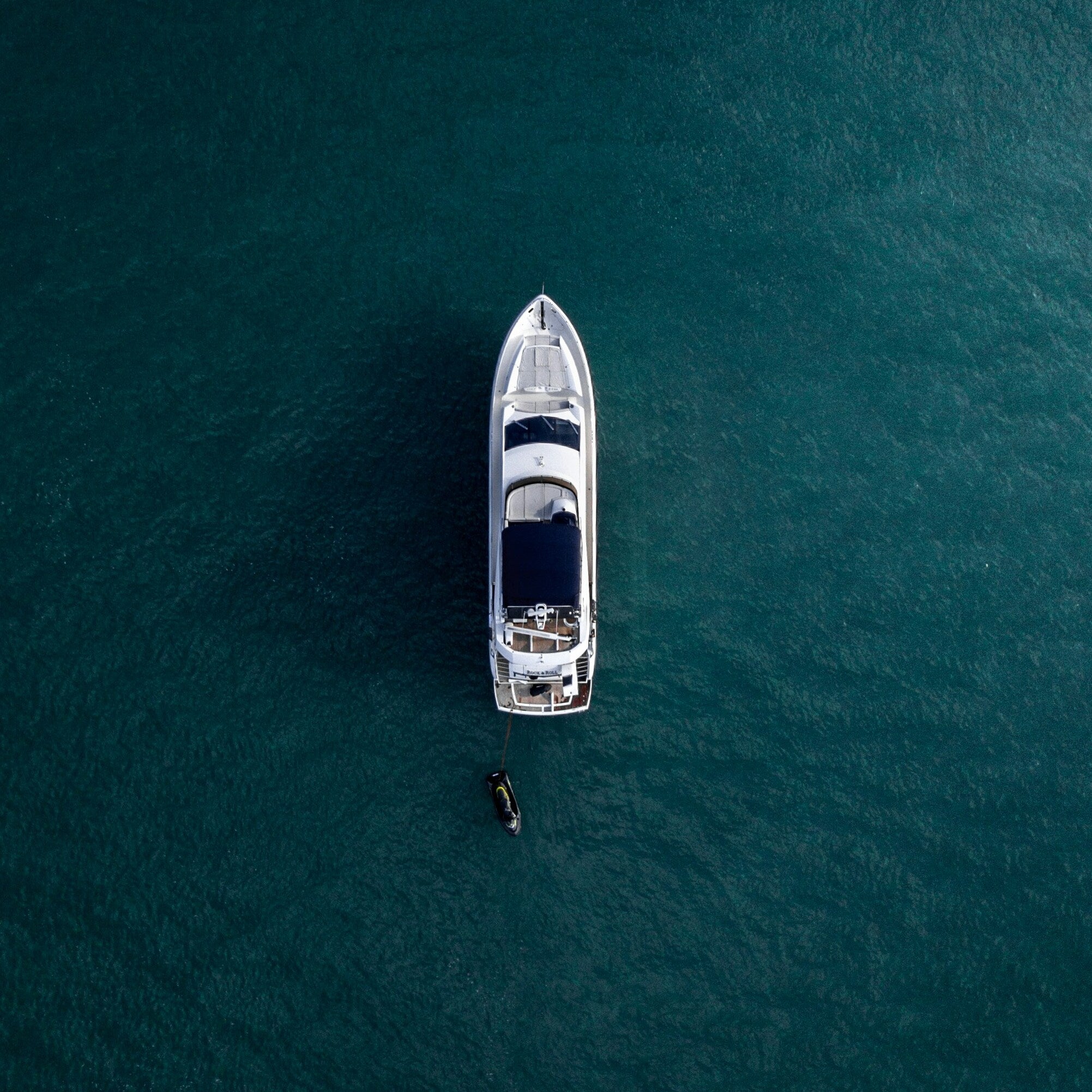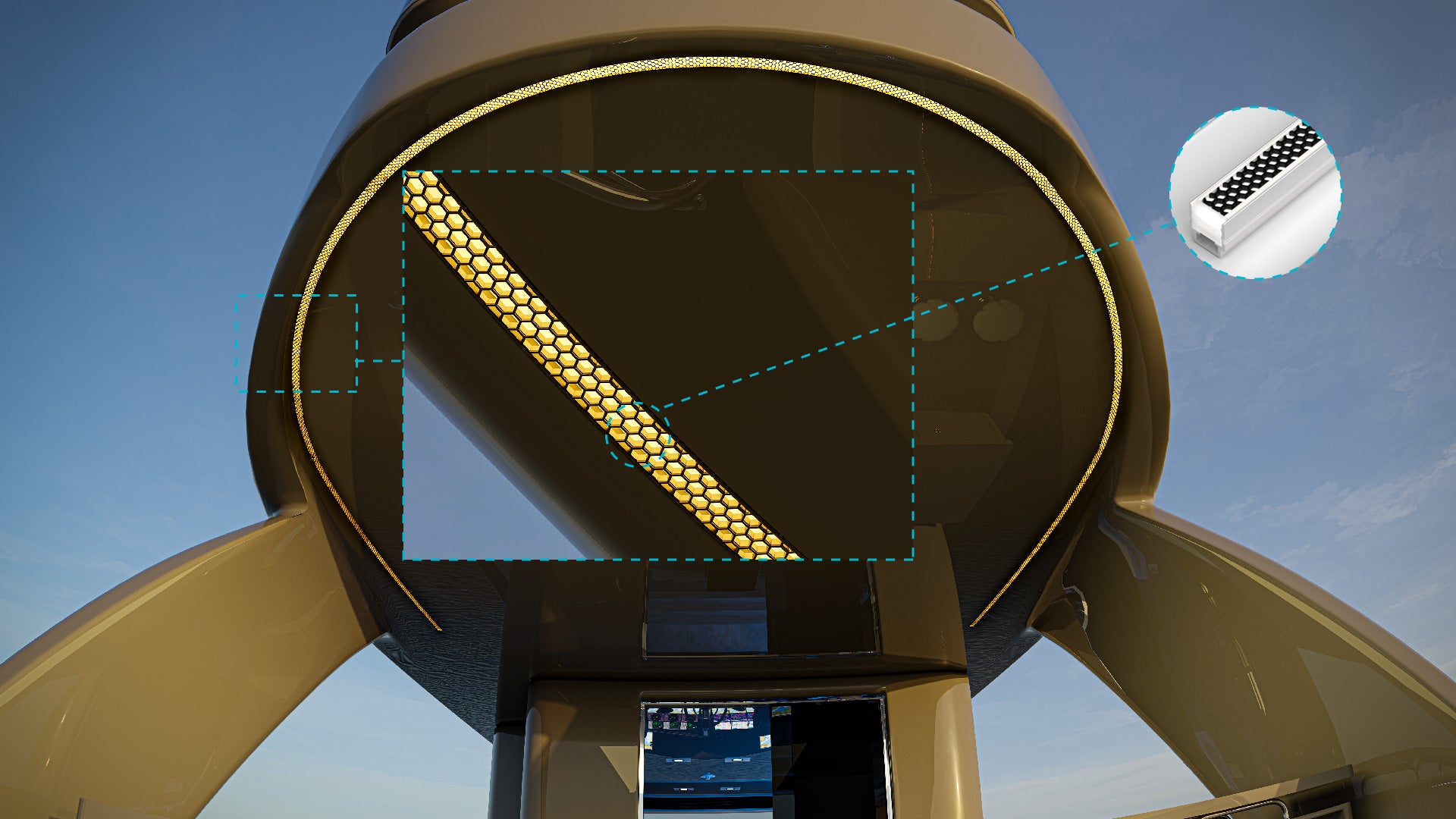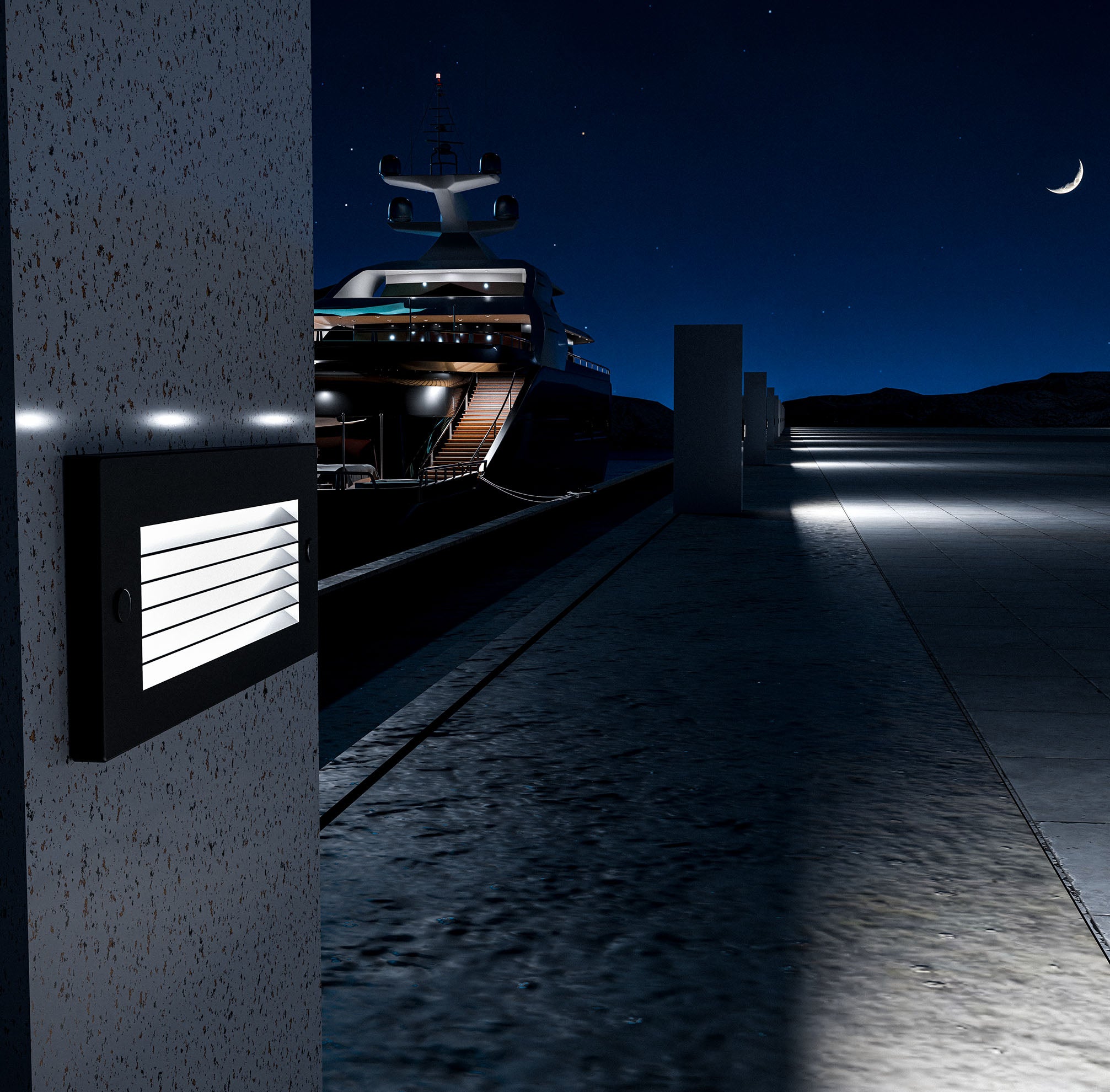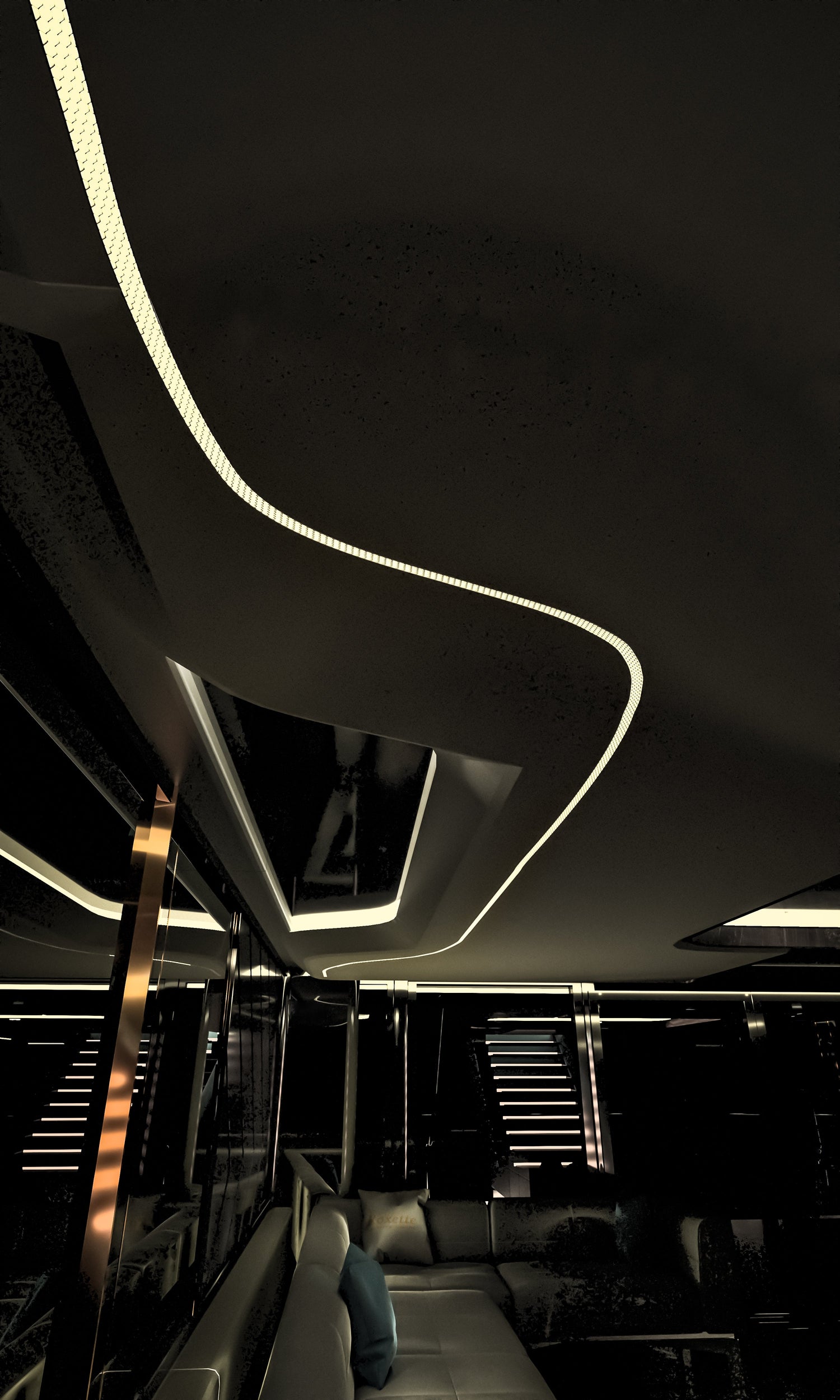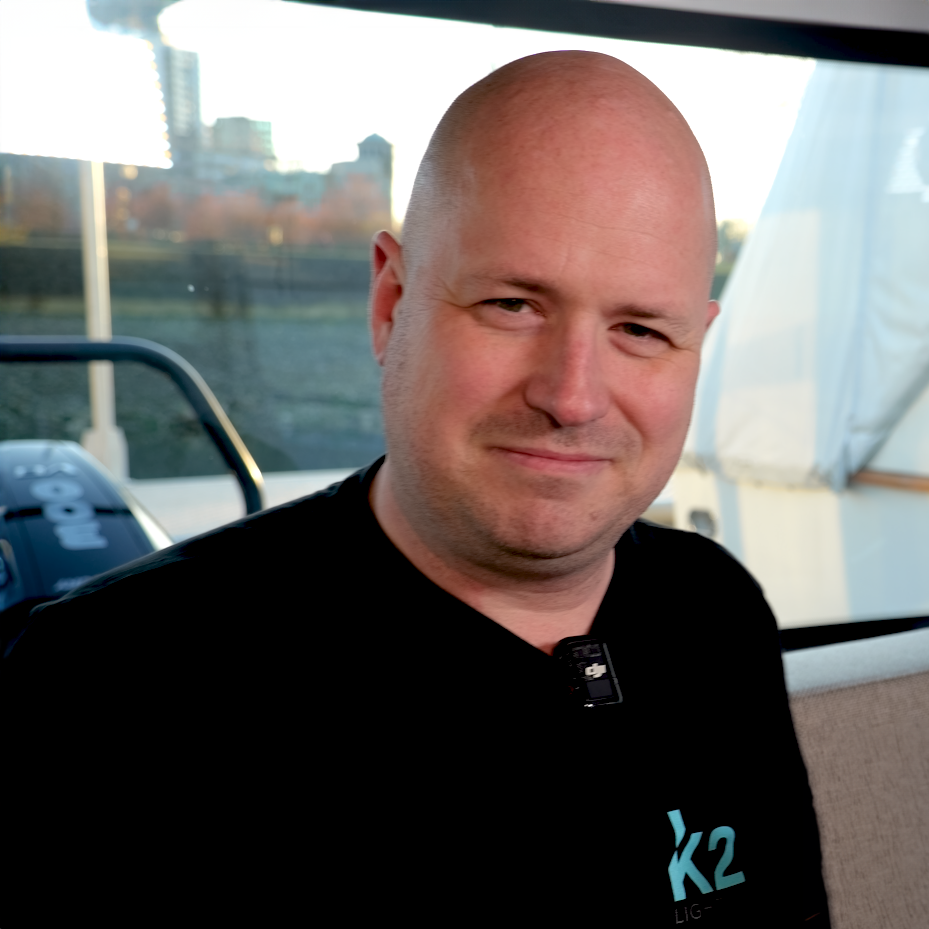Sustainability has become an essential focus in the boating industry as environmental concerns, rising fuel costs, and regulatory changes push boat owners toward greener alternatives. Every decision made on a boat, from engine efficiency to waste management, plays a role in reducing its environmental impact. However, one of the most overlooked yet impactful areas is lighting. Traditional lighting systems, such as halogen and incandescent bulbs, are notorious for their high energy consumption, frequent replacements, and significant carbon footprint.
LED (Light Emitting Diode) lighting has emerged as a transformative solution, offering unparalleled energy efficiency, longevity, and minimal waste. Marine-grade LED lights are specifically designed to withstand harsh conditions while reducing energy draw and extending the life of onboard power systems.
In this blog, we’ll explore how LED lighting contributes to sustainable boating, reduces carbon emissions, and supports year-round environmentally responsible practices.
The Environmental Impact of Traditional Boat Lighting
High Energy Consumption
Traditional lighting systems, such as halogen and incandescent bulbs, consume a significant amount of energy. These systems are highly inefficient, converting most of their energy into heat rather than light. On a boat, where power resources are finite and often rely on generators or batteries, this inefficiency becomes costly both environmentally and financially. More generator runtime translates to increased fuel consumption, which in turn leads to higher greenhouse gas emissions.
For boaters who spend long hours on the water or anchor off-grid, the constant need to power inefficient lighting systems can quickly drain batteries, reduce fuel reserves, and contribute to environmental degradation. Replacing these energy-intensive fixtures with marine-grade LEDs significantly reduces power consumption, offering a clear path toward more sustainable boating practices.
Frequent Replacements and Waste
The lifespan of traditional light bulbs is alarmingly short, often requiring replacements every few months on high-usage boats. Halogen bulbs typically last around 1,000–2,000 hours, while incandescent bulbs may burn out even faster. The frequent replacement of these bulbs generates unnecessary waste, contributing to landfill buildup and increasing the environmental footprint of each vessel.
Additionally, certain traditional bulbs, such as fluorescent lights, contain hazardous materials like mercury, posing risks during disposal. LED fixtures, on the other hand, have an operational lifespan of over 50,000 hours, drastically reducing waste from frequent replacements and minimizing the environmental impact associated with discarded bulbs.
Heat Emissions and Energy Loss
Traditional bulbs are inefficient not only because of their power draw but also because of the excessive heat they emit. Onboard cooling systems often have to work harder to compensate for the heat produced by halogen or incandescent bulbs, leading to further energy consumption. In small, enclosed spaces like cabins or engine rooms, this excess heat can also pose safety hazards.
Marine-grade LED lighting generates minimal heat while converting almost all energy directly into light. This efficient energy transfer reduces overall power consumption, enhances safety, and eliminates unnecessary strain on cooling systems.
Why LED Lighting is the Sustainable Choice for Boaters
Energy Efficiency and Reduced Power Draw
One of the most significant advantages of marine-grade LED lighting is its exceptional energy efficiency. LEDs consume up to 80% less power than traditional lighting systems while delivering brighter and more focused illumination. For boaters relying on battery power during extended trips or anchored stays, this efficiency translates directly into prolonged battery life and less frequent reliance on fuel-powered generators.
In real-world applications, replacing halogen floodlights or incandescent cabin lights with marine-grade LEDs can reduce onboard energy consumption substantially. This energy savings not only reduces operational costs but also lowers the vessel’s overall carbon footprint.
Longer Lifespan and Reduced Waste
Marine-grade LEDs are built for durability and extended lifespan, often lasting over 50,000 hours of continuous use. This longevity far surpasses traditional lighting systems, which typically require multiple replacements over the same time period. Fewer replacements mean less manufacturing, packaging, and transportation waste, all of which contribute to a lower environmental impact.
Additionally, many marine-grade LED fixtures are constructed from recyclable materials, further supporting environmentally responsible disposal practices at the end of their lifecycle.
Cooler Operation and Reduced Heat Emissions
Unlike halogen or incandescent bulbs, which emit significant heat during operation, LEDs remain cool even after hours of continuous use. This cooler operation reduces the strain on onboard cooling systems, saving additional energy and preventing heat-related wear and tear on fixtures and surrounding materials.
For enclosed spaces like cabins, engine rooms, and storage compartments, the reduced heat emissions of LEDs also enhance safety and comfort, creating a more enjoyable onboard experience while minimizing energy waste.
Key Areas Where LED Lighting Reduces Carbon Footprint on Boats
Navigation and Signal Lights
Navigation and signal lights are essential for nighttime operations and compliance with maritime safety regulations. These lights are often required to remain illuminated for extended periods, consuming significant energy when using traditional bulbs. Marine-grade LED navigation lights offer bright, reliable illumination with minimal power draw, ensuring compliance without draining battery reserves.
Additionally, LEDs provide consistent visibility in all weather conditions, enhancing safety during low-light or foggy conditions while supporting energy-efficient boating practices.
Cabin and Interior Lighting
Cabin lighting systems are among the most frequently used fixtures on boats, serving spaces like sleeping quarters, kitchens, and dining areas. Traditional bulbs often overheat small spaces, require frequent replacements, and consume substantial energy when used for extended hours. LED cabin lights, with their long lifespan and energy-efficient design, eliminate these problems.
Modern LED fixtures also come with dimmable settings and adjustable color temperatures, allowing boaters to customize lighting levels while conserving energy when full brightness isn’t required.
Deck and Exterior Lighting
Deck lighting serves both functional and safety purposes, ensuring visibility during night operations, anchoring, or entertaining guests. Marine-grade LED floodlights, strip lights, and pathway lights provide uniform, bright illumination with minimal energy draw. These fixtures are designed to endure salt spray, moisture, and UV exposure, ensuring reliable performance even in harsh marine conditions.
The ability to direct LED beams precisely where light is needed reduces light spillage, further optimizing energy use.
Underwater Lighting
Underwater LED lights enhance both the aesthetics and functionality of a boat, creating stunning visuals while improving underwater visibility for tasks like anchoring or hull inspections. Traditional underwater lights require frequent maintenance and consume significant power. In contrast, marine-grade LED underwater fixtures are energy-efficient, corrosion-resistant, and long-lasting, minimizing maintenance requirements while delivering reliable performance.
The Role of Smart Lighting in Sustainable Boating
Automation and Timer Controls
Smart LED lighting systems are revolutionizing energy efficiency in marine environments by introducing automation and precise control. With timer functions, boat owners can schedule lighting to turn on and off automatically based on the time of day or activity requirements. For example, deck lights can be programmed to activate at sunset and turn off at sunrise, eliminating unnecessary energy use. These automated schedules prevent human error, such as leaving lights on overnight or during daylight hours, significantly reducing wasted energy and extending battery life.
In addition, many smart marine lighting systems come with occupancy sensors that activate lights only when someone is present. This prevents energy from being wasted on unused areas like cabins, storage compartments, or lesser-used walkways.
Motion Sensors for Efficient Usage
Motion-activated lighting is another innovation that improves energy efficiency on boats. These sensors detect movement and automatically turn on lights in key areas, such as stairways, walkways, and storage spaces, before switching them off when no motion is detected. This eliminates the common issue of lights being left on accidentally, which can quickly drain onboard power reserves.
Motion-sensor LEDs are particularly useful in spaces with intermittent use, such as engine rooms or cargo holds, where leaving lights on can go unnoticed for extended periods. This smart feature ensures energy is used only when absolutely necessary, contributing to year-round sustainability.
Remote Monitoring and Controls
Advancements in marine smart lighting technology have introduced remote monitoring and control systems accessible via mobile apps or centralized control panels. These systems allow boat owners to manage lighting zones, adjust brightness, and even change color temperatures remotely. For example, cabin lights can be dimmed while deck lights remain bright during nighttime anchoring, optimizing power consumption without compromising visibility.
Remote controls also enable boat owners to monitor energy usage in real-time, identify high-draw fixtures, and make adjustments to reduce energy waste. This level of precision allows for a proactive approach to energy conservation, making LED lighting systems not only efficient but also highly intelligent.
Solar-Powered LED Lighting: A Step Further in Sustainability
Harnessing Renewable Energy
Solar-powered LED lighting takes sustainable boating to the next level by reducing reliance on onboard batteries and fuel-powered generators. These fixtures are equipped with solar panels that capture sunlight during the day and store energy in onboard batteries to power lights at night. By harnessing renewable solar energy, boat owners can further minimize their carbon footprint and reduce operational costs.
Solar-powered LED lights are particularly useful for exterior applications, such as deck lights, perimeter lighting, and dock lights. They eliminate the need for external power sources and provide a reliable lighting solution even in remote anchorages or off-grid locations.
Ideal Applications for Solar LEDs
Solar-powered marine-grade LEDs excel in areas where sunlight exposure is consistent and fixtures remain stationary. For example, deck lighting, step lighting, and dockside perimeter lights benefit greatly from solar-powered solutions. These lights are also ideal for use in long-term moorings or marinas, where energy efficiency and reliability are paramount.
In addition to standalone fixtures, hybrid systems that combine solar energy with battery backup offer consistent performance even on cloudy days or during extended low-light conditions.
Balancing Solar and Battery Power
While solar lighting is incredibly effective, cloudy weather and limited daylight hours can sometimes reduce energy capture. Hybrid systems, which combine solar panels with battery storage, provide a balanced solution for uninterrupted lighting performance. During daylight, solar panels charge the batteries, and when sunlight is insufficient, the lighting fixtures seamlessly switch to stored battery power.
This dual approach ensures consistent lighting performance year-round, regardless of weather conditions, while reducing reliance on fuel-powered energy sources.
Energy Usage Comparison
The difference in energy consumption between LED and traditional lighting systems is striking. For example, a single halogen bulb may consume 50 watts, while an equivalent LED fixture produces the same brightness using just 10 watts. When scaled across an entire boat, this energy savings becomes significant, especially during extended voyages or long nights at anchor.
Consider a vessel with 30 lights running for six hours every night. Using traditional bulbs, the energy draw could reach 1,500 watts per night. With LED fixtures, the same lighting output might consume only 300 watts, representing an 80% reduction in energy usage.
Long-Term Financial Benefits of LED Lighting for Boaters
Lower Fuel and Generator Costs
Fuel is one of the most significant expenses in boating, and reducing generator runtime directly lowers fuel consumption. LED lights’ low power draw means generators can run less frequently, cutting fuel expenses and minimizing greenhouse gas emissions. Over time, these savings accumulate, offsetting the initial cost of switching to LED fixtures.
Reduced Maintenance and Replacement Costs
LED lights are built to last significantly longer than traditional bulbs, often exceeding 50,000 operational hours. This extended lifespan means fewer replacements, reduced labor costs, and lower maintenance expenses. For hard-to-reach fixtures, such as mast lights or underwater lighting, this durability is particularly advantageous, as frequent replacements can be labor-intensive and costly.
Increased Resale Value of Boats
An energy-efficient lighting system is an attractive selling point for prospective boat buyers. Vessels equipped with marine-grade LED lighting are seen as more modern, eco-friendly, and cost-effective to operate, increasing their overall resale value.
Investing in sustainable upgrades like LED lighting demonstrates forward-thinking ownership, making your vessel stand out in a competitive resale market.
Environmental Regulations and Compliance
Meeting Marine Environmental Standards
Global marine regulations are becoming increasingly strict regarding emissions, energy consumption, and environmental responsibility. LED lighting systems help vessels stay compliant by reducing overall energy demand and fuel consumption.
Supporting Eco-Friendly Boating Initiatives
Sustainability initiatives, such as the International Maritime Organization's (IMO) energy efficiency standards, encourage the adoption of technologies that reduce carbon footprints. By upgrading to LED lighting, boat owners actively contribute to these global efforts while future-proofing their vessels against evolving regulations.
Practical Tips for Transitioning to LED Lighting on Your Boat
Upgrading your boat’s lighting system to marine-grade LEDs is a significant step toward sustainable boating. However, a successful transition requires careful planning, smart choices, and proper execution to ensure you maximize the benefits of energy efficiency, durability, and cost savings. Below are detailed, actionable tips for smoothly upgrading your boat’s lighting while avoiding common pitfalls.
Start with High-Usage Zones
When transitioning to LED lighting, focus on areas of your boat where lights are used most frequently or consume the most power. These high-impact zones include navigation lights, cabin lighting, deck lights, and engine room fixtures. Navigation lights are essential for safety and regulatory compliance, making them a top priority for any upgrade plan. Similarly, cabin lights often remain on for extended periods, especially during nighttime anchoring or long voyages, so upgrading these fixtures can result in significant energy savings.
Exterior deck lights and floodlights are also high-priority fixtures because they are often large power consumers. Start by replacing these fixtures with marine-grade LEDs rated for weatherproofing and corrosion resistance. By tackling these high-impact areas first, you’ll immediately notice a reduction in energy consumption and longer operational hours from your onboard batteries.
Choose Marine-Grade Fixtures
Not all LED lights are created equal, and marine environments demand fixtures specifically engineered for saltwater exposure, temperature fluctuations, and constant movement. Marine-grade LEDs are built with high IP ratings (IP67 or IP68) to ensure protection from water and dust ingress. They are also constructed using corrosion-resistant materials, such as stainless steel or marine-grade aluminum, which prevent rust and material degradation.
When selecting fixtures, pay attention to beam angles, brightness levels (measured in lumens), and color temperature options (warm white for cabins, cool white for workspaces). Choosing fixtures designed explicitly for marine applications guarantees durability, consistent performance, and long-term reliability.
Consult a Marine Electrician
While many LED lighting upgrades are relatively straightforward, certain installations—especially those involving navigation lights, underwater lights, or integrated smart lighting systems—are best handled by a certified marine electrician. Marine electrical systems have unique requirements, including specific voltages, wiring standards, and protection against electrical interference. Improper installation can lead to flickering lights, short circuits, or even electrical fires.
A professional electrician can ensure your new LED fixtures are compatible with your boat’s existing electrical infrastructure. They can also optimize circuits, install appropriate fuses, and recommend upgrades to prevent overload or inefficiencies.
Focus on Lighting Zones
Dividing your boat into lighting zones allows you to optimize power consumption and improve overall lighting efficiency. Common zones include:
- Cabin Zone: Dimmable, warm white LEDs for relaxation and evening ambiance.
- Workspaces and Kitchens: Bright, cool white LEDs for clarity and precision tasks.
- Deck and Outdoor Areas: Weatherproof, adjustable floodlights and accent lights.
- Navigation Lights: Energy-efficient, high-visibility LEDs compliant with maritime regulations.
- Underwater Lighting: Corrosion-resistant RGB LEDs for ambiance and underwater visibility.
By creating dedicated zones, you can control each area independently, reducing unnecessary power usage. For example, cabin lights can remain dimmed while deck lights stay bright during nighttime anchoring.
Optimize Smart Lighting Features
If you’ve invested in smart marine lighting controls, take the time to optimize these features. Use timers and motion sensors to ensure lights only activate when needed, reducing unnecessary energy use. Create preset lighting scenes for different scenarios, such as nighttime anchoring, cabin relaxation, or dining on deck.
Mobile apps and centralized control systems also allow remote monitoring of power consumption, helping you identify energy-draining fixtures or zones. Use this data to make ongoing adjustments that maximize efficiency and minimize your carbon footprint.
Recycle Old Lighting Fixtures Responsibly
Transitioning to LED lighting means you’ll need to dispose of old fixtures and bulbs properly. Traditional incandescent, halogen, or fluorescent bulbs often contain hazardous materials like mercury or lead, which can harm marine ecosystems if improperly disposed of.
Research local recycling programs or marine-specific waste facilities that can safely process and dispose of old lighting systems. Many marinas also offer recycling stations specifically for marine electrical waste.
Sustainable boating begins with conscious choices, and upgrading to marine-grade LED lighting is one of the most impactful changes boat owners can make. From reducing energy consumption and lowering maintenance costs to minimizing carbon emissions and supporting renewable energy solutions, LEDs offer long-term environmental and financial benefits.
Explore K2 Lighting's range of marine-grade LED lighting solutions and start reducing your boat's carbon footprint today.

